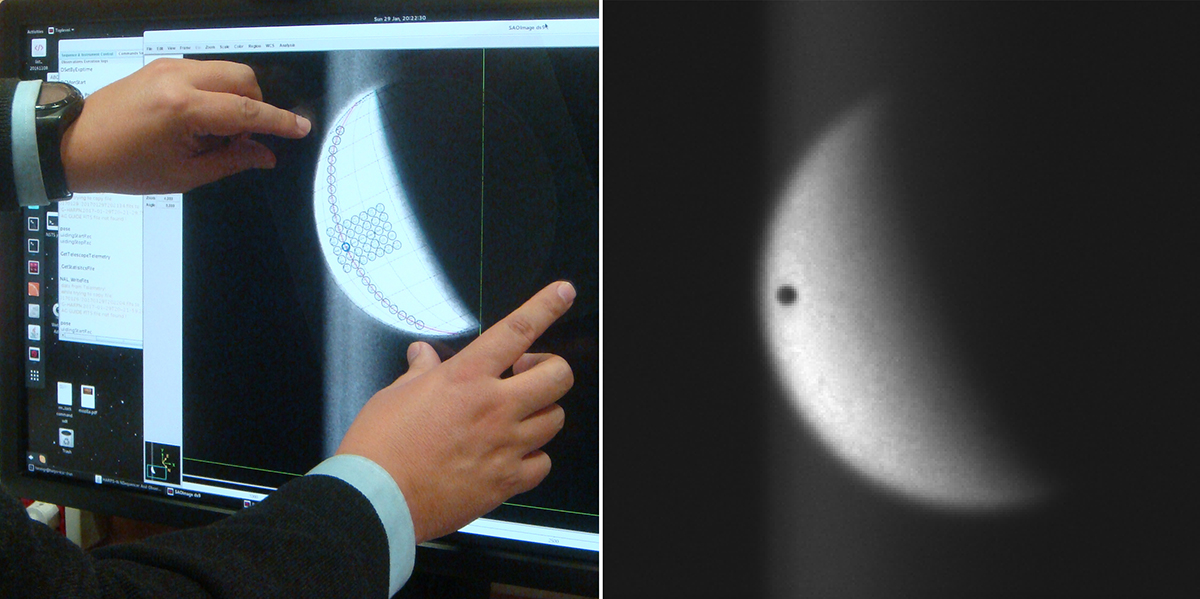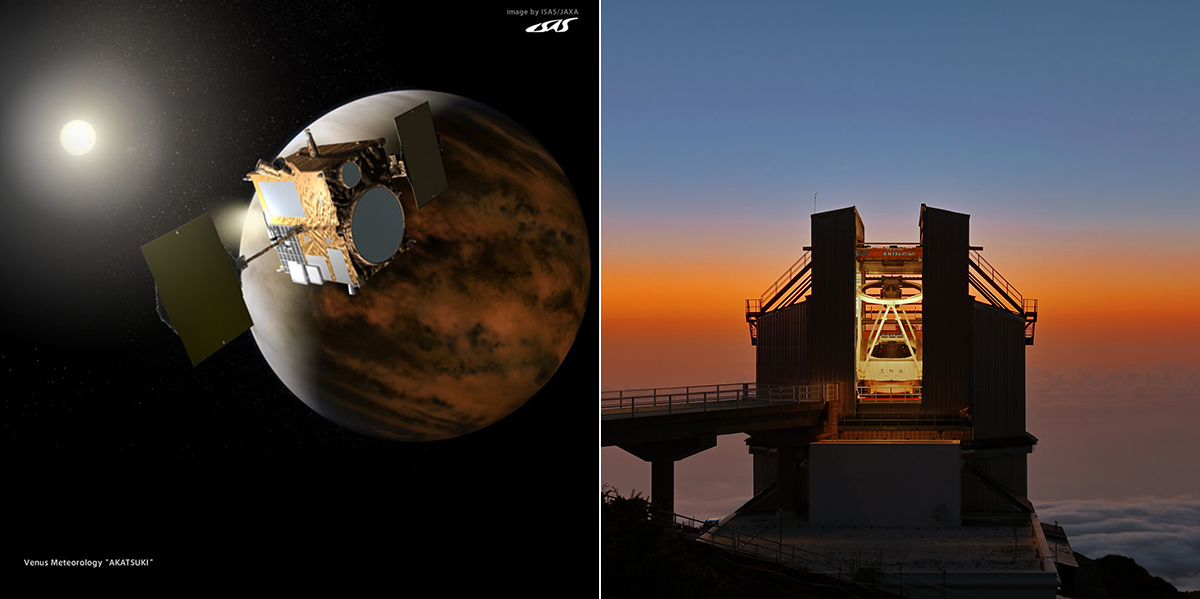Unique TNG/HARPSN observations of the Venus cloud top winds

Image credits: TNG, P. Machado, A. Harutyunyan
Venus spins slowly, a day on Venus lasts 243 Earth days, longer than its year of 225 Earth days around the Sun. This may convey an image of calmness, but the planet actually has an extreme climate with a surface pressure of 93 bars, a mean temperature of 462 Celsius and with violent winds of 400 km per hour moving clouds at altitudes of 70 km from its surface. Ground based observations of Venus have been complemented by the space missions sent to study the planet, its atmosphere and winds, as the study of Venus climate has important implications on our understanding of Solar system in general, and Earth and its climate in particular.
"The atmosphere of Venus is in a state of super rotation, rotating around 60 times faster than the solid globe. The processes that induce and maintain this state are still a mystery and our aim is to study the wind dynamics on Venus, its spatial and temporal variability and detect and characterize atmospheric gravity waves. As Venus has large amounts of carbon dioxide in its atmosphere composition,the studies of Venusian atmosphere will also help us to better understand and predict climate change on Earth. Also, Venus can be regarded as a proxy for atmospheric characterization of exoplanets", says Pedro Machado of the Institute of Astrophysics and Space Sciences (IA) and the Faculty of Sciences of the University of Lisbon, a leading expert in the study of the Venus atmosphere. In order to study the wind and upper atmosphere dynamics of Venus, Machado and his colleagues have been developing observational strategies which use the spectra and the Doppler velocimetry techniques to map cloud top wind velocities. Such observations greatly benefit from the precision and stability of the spectrograph used, thus HARPS-N at the Telescopio Nazionale Galileo, the most precise spectrograph in the northern hemisphere, entered the game.
"HARPS-N is the most stable and precise high resolution spectrograph observing the northern skies in the world. It is especially made for extrasolar planet searches and does it the best", says Avet Harutyunyan of the Telescopio Nazionale Galileo (TNG), Italian Istituto Nazionale di Astrofisica (INAF). Even if HARPS-N was not perfectly suitable for Venus wind observations, Machado and Harutyunyan teamed up to exploit the spectrograph's unrivalled precision and to adapt it to the needs of such a study. All the necessary modifications could be done, the feasibility of the technique was verified at the TNG and on the nights of Jan 28-29 the observations were successfully carried out with the HARPS-N.
As Harutyunyan says, "The Venus' wind observations were not the usual ones we do with HARPS-N, moreover, there were a few really challenging technical points. However, we be lieved we could still do it. It required a really hard work, but I am very satisfied with these results. And you know, if it was not challenging, the data we obtained would not be unique!". "The fantastic stability of the HARPS-N spectrograph, and the high spatial resolution provided by the TNG telescope will allow us to retrieve Venus' wind velocities with an unmatched precision and spatial and temporal accuracy. With this project, TNG and HARPS-N opened a new window for Planetary Systems atmospheric characterization", says Machado.
And if this was not enough, the TNG/HARPS-N ground based observations were coordinated with the Japan Aerospace Exploration Agencie's (JAXA) Akatsuki satellite simultaneous observations of Venus. Venus Climate orbiter "Akatsuki" is currently the only spacecraft operating around Venus. These simultaneous observations from Akatsuki and TNG/HARPS-N ensured an unprecedented ground and space-based Venus dataset and the astronomers are looking forward to some new scientific results based on it, which will be an important contribution to our knowledge of Venus'wind dynamics.

Image credits: ISAS/JAXA and TNG/G. Tessicini
Contact: dydat@tng.iac.es

